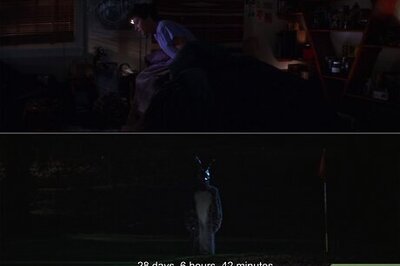
views
What is a French tuck?
The “French tuck” is a term for tucking in only the front of your shirt. This styling trick involves tucking the front part of an oversized, billowy top into a mid or high-rise bottom, while leaving the rest of the shirt hanging loose. This has the effect of elongating your figure, balancing your proportions, and defining your waist. Tan France, the fashion expert on the Netflix show Queer Eye, is responsible for popularizing the style and coining the term. The French tuck is a popular style for all genders.
What clothes do you need to do a French tuck?
An oversized top. The French tuck tends to work best with a billowy, looser-fitting top. When you tuck in the front part of this type of shirt, it creates the effortless, chic draping effect associated with the French tuck. Pretty much any type of oversized top works for this style, including button-downs, blouses, T-shirts, sweaters, and sweatshirts.
Mid rise or high rise bottoms. The French tuck is meant to elongate your legs and define your waist. Because of this, it’s important to pick mid-rise or high-rise bottoms, since these tend to sit closer to your natural waist than low-rise bottoms do. You can do the French tuck with trousers, jeans, or a skirt—whatever fits your style best!
How to Do a French Tuck
With a button-down Tuck in the front part of the shirt until you reach just before your hip bones on both sides. Leave the sides and the back of the shirt completely loose and untucked. Once the front of the shirt is tucked in, adjust the fabric until it’s draped to your liking. This may require pulling some of the shirt out or tucking more of the shirt in to create the right amount of volume in the area where it's “poofing” out. For a fun variation, try tucking in just one side of your button-down in the front. Leave the last few buttons of the shirt unbuttoned, then tuck the side with the buttons into the front of your bottoms. Leave the side with the buttonholes loose.
With a T-shirt Tuck in the front of the T-shirt slightly off-center to create a more casual look. If you’re wearing jeans or trousers, tuck the shirt into your waistband near the first belt loop next to the button on your preferred side. If you’re wearing a skirt or bottoms without a belt loop, tuck the shirt in slightly to the right or left of center. Adjust the fabric so that it drapes down either side of the tuck. If you prefer to do a centered French tuck with your T-shirt, that works too! Just tuck the front of the shirt into your pants in the space between the two front belt loops, then adjust the draping as needed.
With a sweater or sweatshirt Knit sweaters and oversized sweatshirts tend to be a bit chunkier, and they require a little more room than other shirts when tucked in. To accommodate this, consider wearing bottoms that have a roomier or stretchier waistband. From there, tuck the front part of the sweater or sweatshirt into your bottoms and let it drape around the sides of the tuck. Both a centerted and an off-center French tuck work for sweaters and sweatshirts—it’s just a matter of your personal preference!
Styling Tips for a French Tuck
Wear a cute belt. Adding a belt to the look will define your waist even more and help hold the fabric of your tucked-in shirt in place. And, since you’ll be tucking in the front part of your shirt, this is the perfect opportunity to show off a belt with stylish buckle!
Adjust the amount of tucked-in fabric until you get the look you want. The French tuck is pretty simple, but it usually does take a little finessing to get the shirt to drape and billow out the right way. You’ll likely need to pull some of the fabric out or tuck more of it in a few times to get the look you’re going for, so be patient and persistent.
Try out the French tuck with various types of bottoms. All types of bottoms work with the French tuck, as long as they’re mid or high rise. Feel free to experiment with your bottoms to create a look that fits your own personal style. For example, wide-leg trousers, straight leg jeans, and midi skirts all look great with a French tuck.
If you’re having trouble achieving the look, stick to lighter-weight tops. It’s easiest to do the French tuck with lighter, silkier fabrics (as opposed to bulkier sweaters or sweatshirts). If you’re new to the French tuck and you’re struggling to get it to drape the right way, opt for thinner T-shirts, button-downs, and blouses to start. Once you get the French tuck down with these fabrics, you’ll be better equipped to try it out with chunky knits or sweatshirts!


















Comments
0 comment